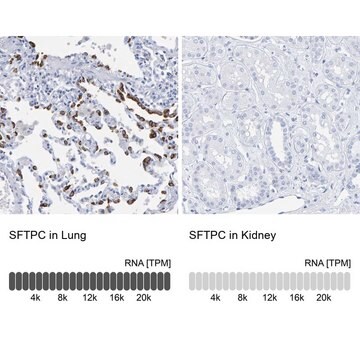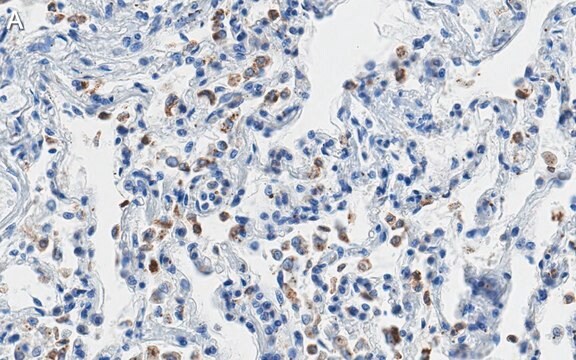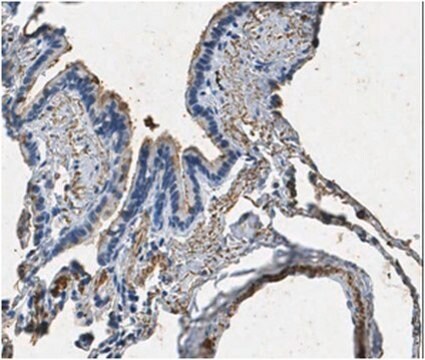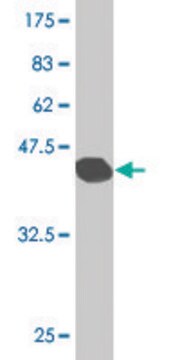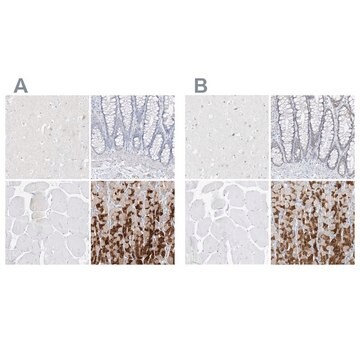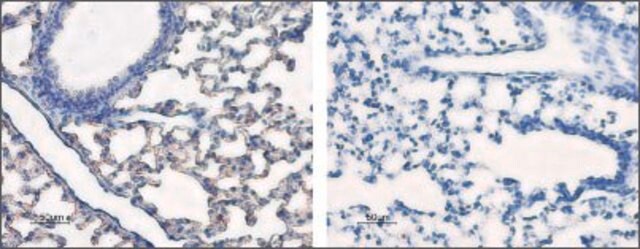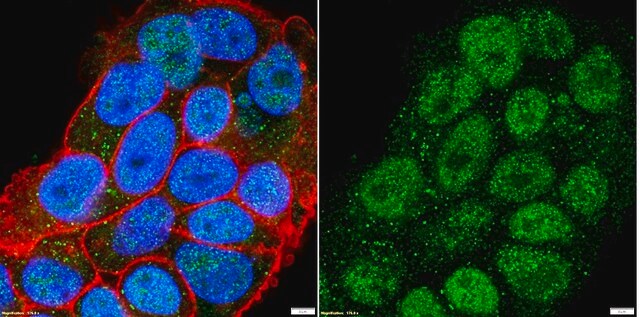AB3786
Anti-SFTPC Antibody
CHEMICON®, rabbit polyclonal
Synonim(y):
proSP-C
About This Item
Polecane produkty
Nazwa produktu
Anti-Prosurfactant Protein C (proSP-C) Antibody, serum, Chemicon®
pochodzenie biologiczne
rabbit
Poziom jakości
forma przeciwciała
serum
rodzaj przeciwciała
primary antibodies
klon
polyclonal
reaktywność gatunkowa
mouse, rat
producent / nazwa handlowa
Chemicon®
metody
immunohistochemistry (formalin-fixed, paraffin-embedded sections): suitable
western blot: suitable
numer dostępu NCBI
numer dostępu UniProt
Warunki transportu
dry ice
docelowa modyfikacja potranslacyjna
unmodified
informacje o genach
human ... SFTPC(6440) , SP5(389058)
Opis ogólny
Specyficzność
Immunogen
Zastosowanie
- Western Blotting Analysis: A 1:500 dilution from a representative lot detected Prosurfactant Protein C (proSP-C) in mouse lung tissue lysate and GST-fusion Prosurfactant Protein C fragment.
- ELISA Analysis: A 1:50,000 dilution from a representative lot detected GST-fusion Prosurfactant Protein C fragment.
- Immunohistochemistry (Paraffin) Analysis: A 1:2,000 dilution from a representative lot detected Prosurfactant Protein C (proSP-C) in mouse lung tissue sections.
- Note: Actual optimal working dilutions must be determined by end user as specimens, and experimental conditions may vary with the end user.
Metabolism
Ion & Transport Channels
Jakość
Opis wartości docelowych
Powiązanie
Postać fizyczna
Przechowywanie i stabilność
Komentarz do analizy
Mouse lung epithelial cells.
Inne uwagi
Informacje prawne
Oświadczenie o zrzeczeniu się odpowiedzialności
Nie możesz znaleźć właściwego produktu?
Wypróbuj nasz Narzędzie selektora produktów.
polecane
Kod klasy składowania
12 - Non Combustible Liquids
Klasa zagrożenia wodnego (WGK)
WGK 1
Temperatura zapłonu (°F)
Not applicable
Temperatura zapłonu (°C)
Not applicable
Certyfikaty analizy (CoA)
Poszukaj Certyfikaty analizy (CoA), wpisując numer partii/serii produktów. Numery serii i partii można znaleźć na etykiecie produktu po słowach „seria” lub „partia”.
Masz już ten produkt?
Dokumenty związane z niedawno zakupionymi produktami zostały zamieszczone w Bibliotece dokumentów.
Klienci oglądali również te produkty
Nasz zespół naukowców ma doświadczenie we wszystkich obszarach badań, w tym w naukach przyrodniczych, materiałoznawstwie, syntezie chemicznej, chromatografii, analityce i wielu innych dziedzinach.
Skontaktuj się z zespołem ds. pomocy technicznej